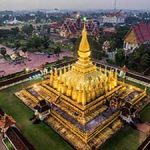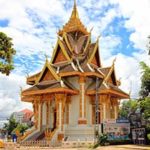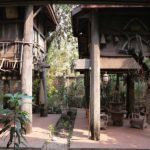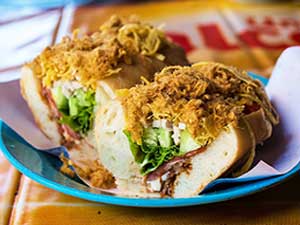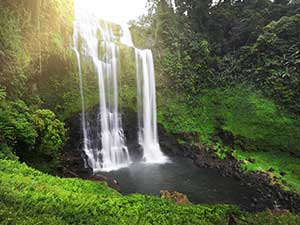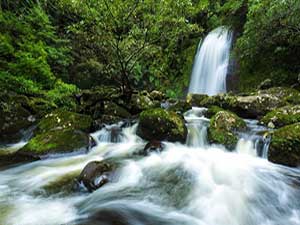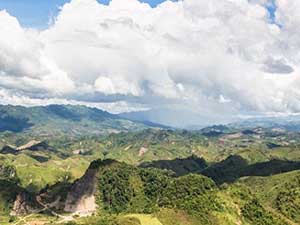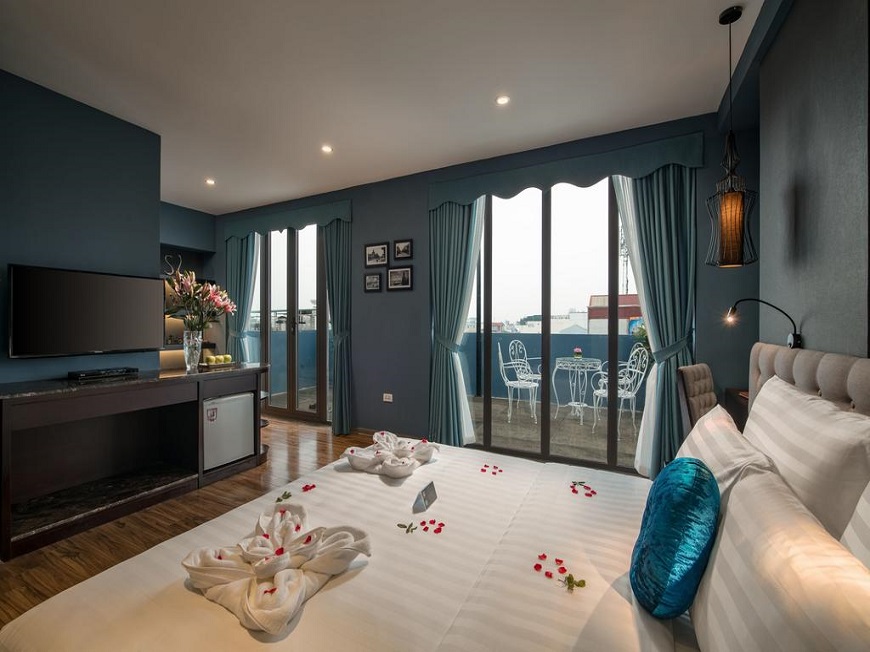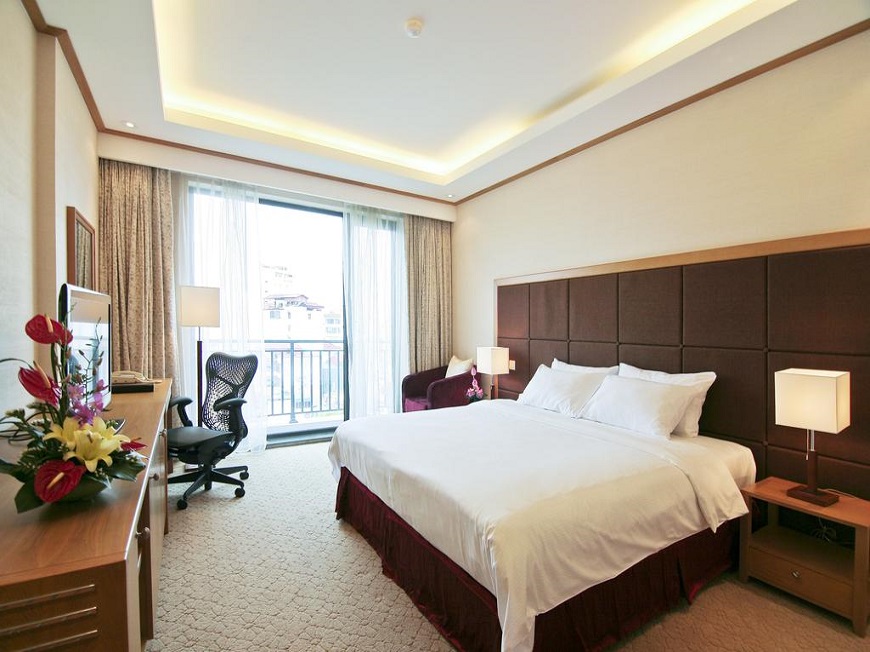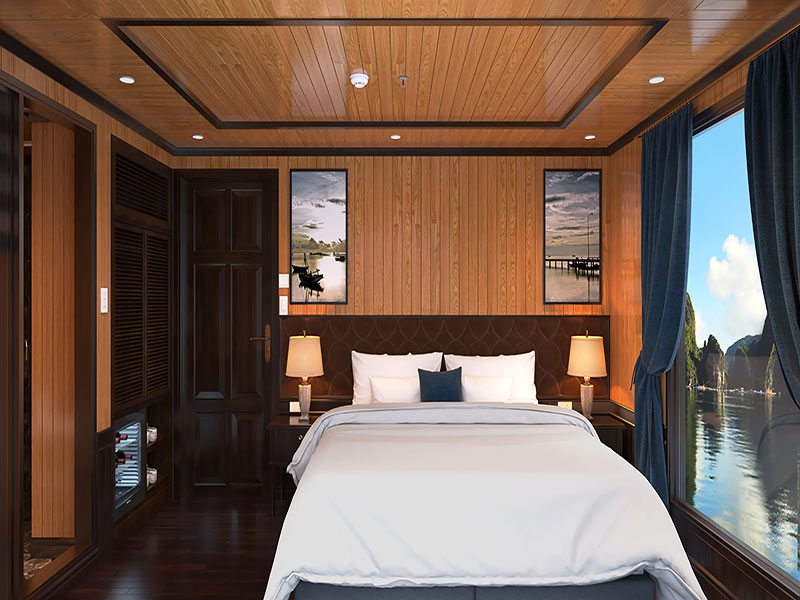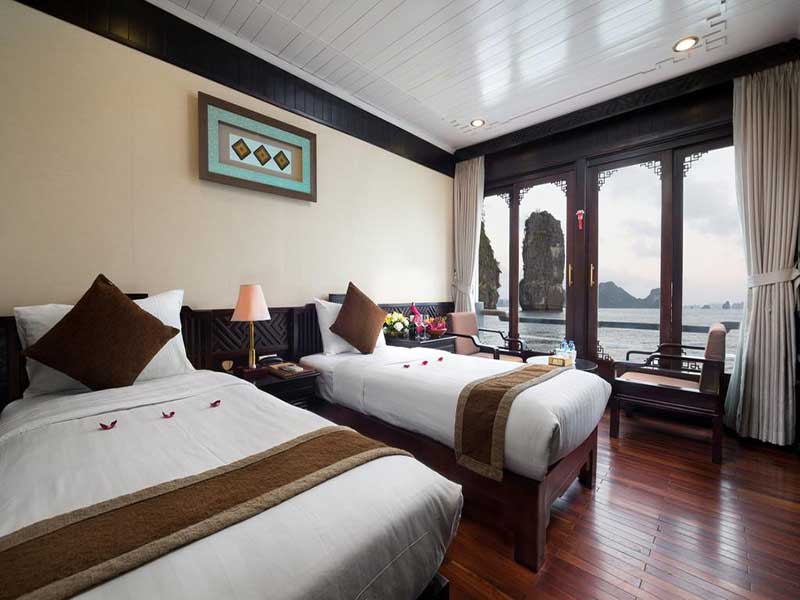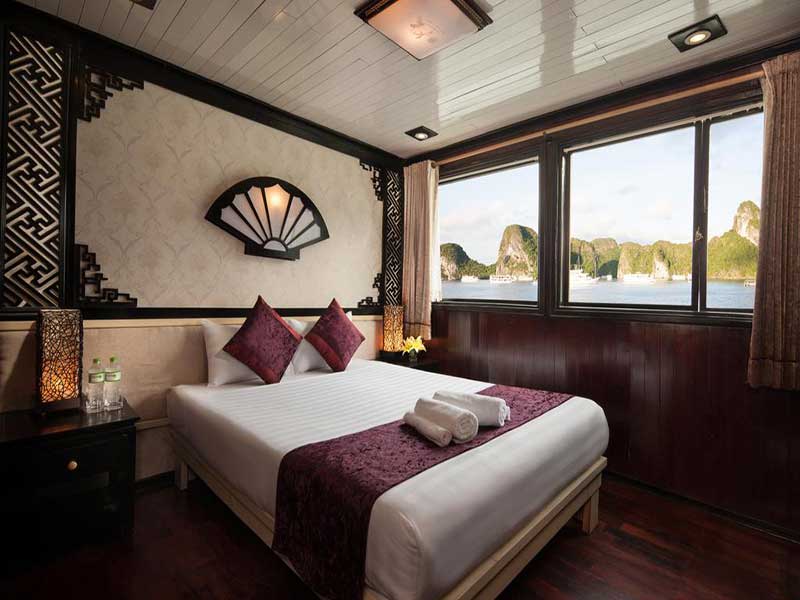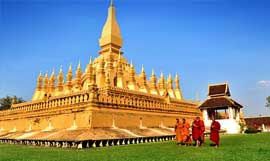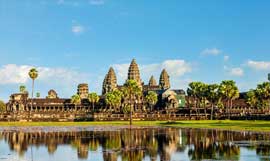In recent years, many people choose to travel to Laos and Vientiane capital is one of the most popular destinations. Peaceful Vientiane with various famous sites, historical monuments and architectural works has attracted a wide range of tourists. How to get to Vientiane? Which scenery, food and interesting customs do you definitely not miss if traveling Vientiane? Let us explore that fascinating things right away!
Vientiane – the peaceful place of Laos
Everyone coming to Vientiane feels that this destination is not boisterous, strident and noisy. Vientiane is known as the capital which having the slow pace of life with a strange peace, and a sense of closeness. Therefore, everyone will experience the full happiness.

(Source: internet)
Vientiane does not have the magnificent beauty but the simple and quiet beauty of a village girl with the charm needed to be discovered. In Vientiane there are no large commercial centers, modern amusement parks, bustling and busy marketplaces but ancient temples are available with hundreds years of history.
In the heart of a small capital, there are hundreds of famous temples as well as other attractions, such as Pha That Luong, Wat Si Saket, Patuxai, … All these tourist attractions where people send their faith to the heaven will affect sentient beings, dispel all the suffering in the life and represent Laos culture.
Geographical location of Vientiane
Vientiane Capital is located in the Vientiane Special Urban Area. The day before Vientiane was in Vientiane, but in 1989 it was split into two areas: Vientiane Province and Vientiane Special Urban Area. Vientiane is located in the north-west of Lao PDR, on a tributary of the Mekong River, which is the natural border between Laos and Thailand.
How to get to Vientiane?
You can get to Vientiane by plane, by train and by bus. Perhaps the most convenient type of transportation is by flight.
To get around in Vientiane, you can use some interesting vehicles like tuk tuk, pickup, bus, boat or taxi. Two common types of vehicles in Vientiane that are improved and used for passengers are tuk tuk and pickup. Besides this, buses are always available and you will easily have trips to places that you want to explore the ancient temples, peaceful life and meet the intimate Vientiane residents.

(Source: internet)
Attractions not to be missed in Vientiane
Traveling to Vientiane, it is definite that you cannot make a mistake to ignore these following tourist attractions: Patuxai Victory Monument; Pha That Luong; Buddha Park (Xieng Khuan); Wat Ho Phra Keo; Wat Si Saket; Wat Si Muang; Lao National Museum;…
What to eat in Vientiane
In Vientiane, well-known dishes usually introduced to foreign tourists are sticky rice, fish, and many other grilled dishes.
Fragrant sticky rice of Laos is made of rice grown on high hills, with fine seeds and ivory white color. Lao people usually make sticky rice with grilled chicken, boiled vegetables and a kind of delicious sauce.

(Source: internet)
The weather in Vientiane
The weather is hot and humid, divided into two distinct seasons: the dry season from May to September and the rainy season from October to April. The average annual temperature is 29 degrees Celsius, the highest temperature is 40 degrees Celsius and the lowest is about 19 degrees Celsius. The average rainfall is from 1.500 to 2.000 mm.
Vientiane people
Lao people in general and Vientiane people in particular are affectionate, not jealous or envious. Vientiane people always start new days quite late because most offices are open at 9 am. As a city where most people are Buddhist, there is less burglary. The markets meet late and usually busy at 11 am.
Roads and traffic conditions in Vientiane are not good. In peak hours, high-volume traffic is quite annoying, sometimes traffic jams occur but people do not scramble or honk the car horn on the street.
Explore more article: Cope Center; Wat Sisaket; Wat Si Muang; Wat Ho Phra Keo; That Dam (Black stupa); Buddha Park; Phou Khao Khouay National Park; That Luang stupa; Patuxai monument; Laos National museum; Laos Textile museum

